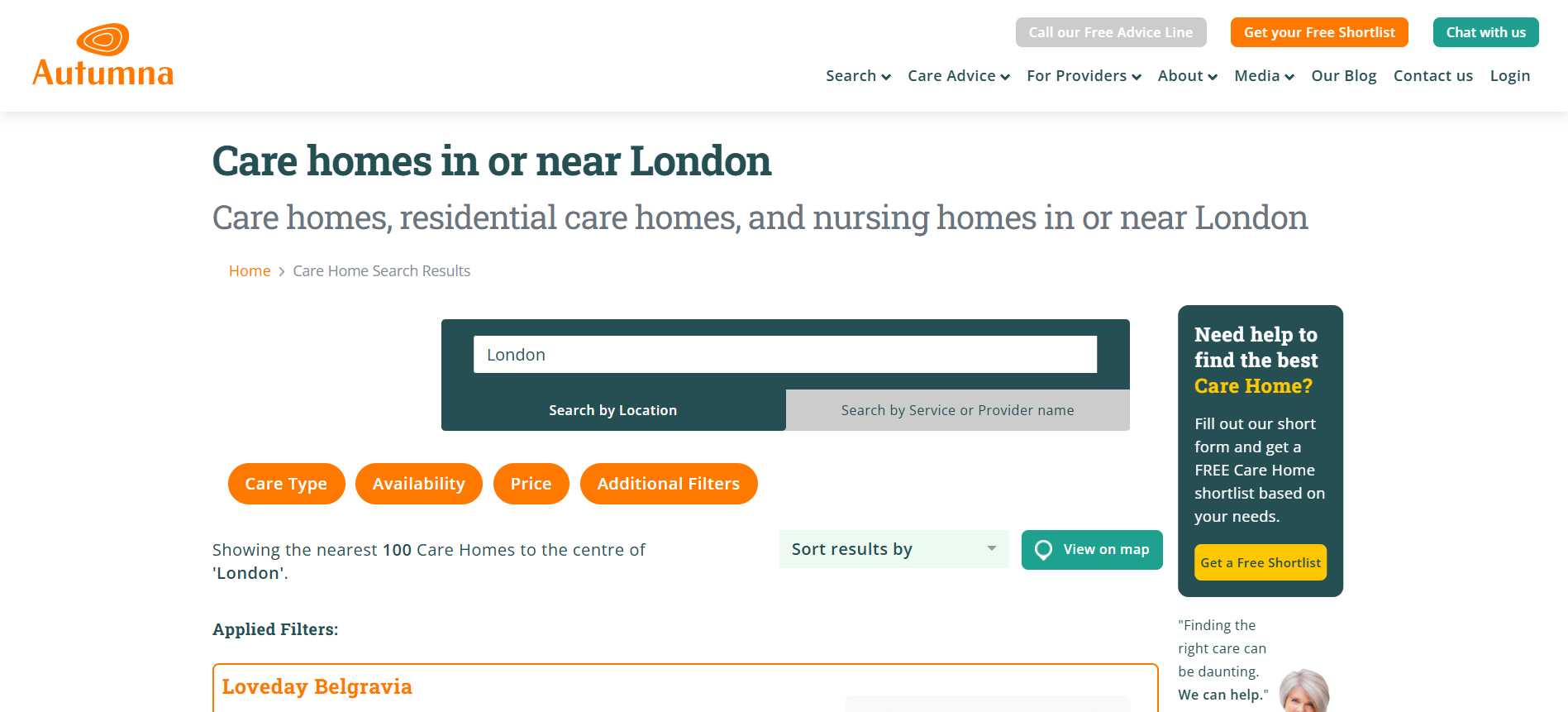Posted by Janine Griffiths
Council run care homes vs private care homes

You’ve made the decision. A care home is needed. That in itself might have taken weeks, months, or even longer to come to terms with. However, now you may have a new question on your mind - where? Where will you feel safe? Where will you feel respected? Perhaps most importantly of all - where can you actually afford?
For many people who are self-funding their care, one of the first big decisions is whether to look at council run care homes or explore private care homes. On the surface, the difference may seem obvious. However, in reality, there’s much more to it than who owns the building.
This blog is here to help you untangle that choice. No jargon, no judgment, no one-size-fits-all advice. Just clear, compassionate guidance that helps you understand how council run care homes differ from private ones, and what those differences might mean for you.
What are council run care homes?
Council run care homes are care homes that are owned and managed by your local authority. Instead of being run by a private company or charity, these homes are operated directly by the council, using public funds. Their purpose is to provide essential support for people who need round-the-clock care but may not be able to afford it privately.
The majority of places in council run homes are reserved for people who meet specific eligibility criteria. This usually means a financial assessment, as well as a needs-based one. If your savings or income fall below a certain threshold and your care needs are considered high enough, you may be offered a place in one of these homes.
According to official statistics, just 4.7% of care homes in England are still directly run by local councils, with the majority of care homes out there being privately owned. For self-funders, this means that your search for care will involve comparing mainly private providers rather than council run options.
However, it is worth knowing which options are out there and what types of care home may become available in the future.
What are private care homes?
Private care homes are managed independently, outside of the council run system. They can be managed by individuals, companies or charitable organisations, and they may operate either for profit or on a not-for-profit basis. What they all share in common is a focus on providing care that’s shaped by the people who choose to live there.
For those who are self-funding, private care homes often present the clearest route forward. They tend to be more open to new residents, with fewer restrictions due to the sheer number of private facilities compared to public ones. Private care homes are not bound by the same funding criteria as council run homes and they’re usually designed with greater flexibility in mind.
There are also many options when it comes to private care homes. For example, they could include quiet country homes to vibrant, community-led spaces that cater to personal choice.
Key differences between council run and private care homes
When deciding between a council run care home and a private one, the differences can feel subtle on the surface but have a meaningful impact on your experience as a resident, especially if you’re self-funding. While both types of homes aim to provide safe, quality care, they typically go about it in different ways.
Funding and eligibility is one of the most noticeable distinctions. Council run care homes are funded by local authorities and prioritise individuals who meet certain financial and care-related criteria. If you're paying for care yourself, you may not automatically qualify for a place, and availability can be limited. Private care homes, by contrast, are open to anyone who can cover the cost and are more well-suited to self-funders.
Choice and flexibility also tend to vary. Council run homes are fewer in number and can sometimes offer a more standardised approach to care, simply due to budget constraints and service demand.
Private homes on the other hand typically have more freedom in how they operate, which allows for a wider range of services, settings, personalisation and facilities. As someone funding their own care, this could mean more options that better reflect your lifestyle or preferences.
Cost can be complex. Council run care homes are not necessarily cheaper for self-funders, as some councils charge higher rates to those paying privately. Private homes set their own fees, which means prices can vary significantly depending on location, amenities and care level, but there is usually a clearer understanding of what you’re paying for.
Waiting times are another factor. Access to a council run home can sometimes involve delays due to assessment processes or limited spaces, while private homes may offer quicker admission.
Understanding these key differences helps you focus your search on the places that best suit your circumstances.
Common misconceptions about council run vs private care homes
It’s easy to assume that private care homes are always better simply because they’re privately owned. The truth is more nuanced. Not all private homes feel like luxury hotels, and not all council run care homes are outdated or basic. What truly matters isn’t who owns the building, but how the care is delivered inside it.
Every registered care home in England, whether council run or privately owned, is regulated by the Care Quality Commission (CQC). This means there are national standards in place for safety, staffing, dignity and cleanliness. However, the CQC’s own report revealed that it would take 2 years to fix its internal failings.
On the other hand, tools like OpenScore bring more transparency by combining official data with up-to-date reviews or combining real-time compliance insights to help families make a more informed choice.
Another common myth is that council run care homes are always cheaper. In reality, the costs of a council-run care home can sometimes match or even exceed those of private providers. According to a 2022 report by LaingBuisson, 43% of councils charge self-funders more than the local authority rate for the same care. And many council run homes include "top-up fees" or extra charges that can catch families off guard if they’re not clearly explained.
Quality and value don’t come down to the label on the door. They come from transparency, good leadership, meaningful staff-to-resident ratios, and clear communication - things you can find in both high-quality council run and private homes.
Looking for a quality care home?
Finding a care home with vacancies that meets your budget has never been easier. Autumna makes it easy to find and shortlist care homes in your area. To get started, head over to the search bar on our website, select the type of care you need and type in your location.
You will then be able to view a list of care homes in your area. To filter results even further, simply click on the orange tabs above the search results to view facilities based on Care Type, Availability, Price and Additional Filters.

Alternatively, our shortlisting tool can do all of the legwork for you and walk you through a few easy steps to find care homes that are even more closely aligned with your unique circumstances.
If you need further help, feel free to speak to one of our friendly and knowledgeable team members by calling 01892 335 330.
Receive a Free Care Home Shortlist!
Let our expert team of advisers get your search off to a great start.
Tell us a little about your needs and we'll send you a bespoke shortlist of care homes! Click the button below to begin, it takes just a few minutes.
Other articles to read
From the blog

Older Persons Care Advice
Annuities for care home fees: Everything you need to know
October 23rd, 2025
Learn how annuities for care home fees provide guaranteed income, financial stability, and peace of mind when planning for long-term care costs.

Older Persons Care Advice
Care options for the elderly: What is right for you?
October 17th, 2025
Discover care options for the elderly that fit your needs, from home support to residential care, helping you plan confidently for the years ahead.

Older Persons Care Advice
Are next of kin responsible for care home fees
October 17th, 2025
Find out the truth about care costs. Are next of kin responsible for paying care home fees? Learn who pays, exceptions, and how to plan ahead.
Frequently Asked Questions
Yes, but it depends on availability and eligibility. Many council run homes prioritise people with assessed care needs and limited financial means, so self-funders may not always get priority or access.
Wages can vary. Council run homes may follow public sector pay scales and offer more stable terms, while private homes may offer more variation in pay depending on ownership, location and business model.
Not always. Due to funding and demand, council run homes may have more standardised routines and fewer luxury options, whereas private care homes often have more flexibility in tailoring services.
The UK's largest & most detailed directory of elderly care and retirement living options
10,299
Care Homes
11,759
Home Care Services
1,669
Live-in Care Services
1,765
Retirement Living Developments
Autumna is the UK's largest and most comprehensive later-life living & elderly care directory. Our detailed search facility and team of expert advisors can help you find the best care homes, nursing homes, retirement homes, retirement villages, home care, and live-in care services for you or your loved one's needs. Our website is free to use, we are proudly independent, and we never take referral fees.






